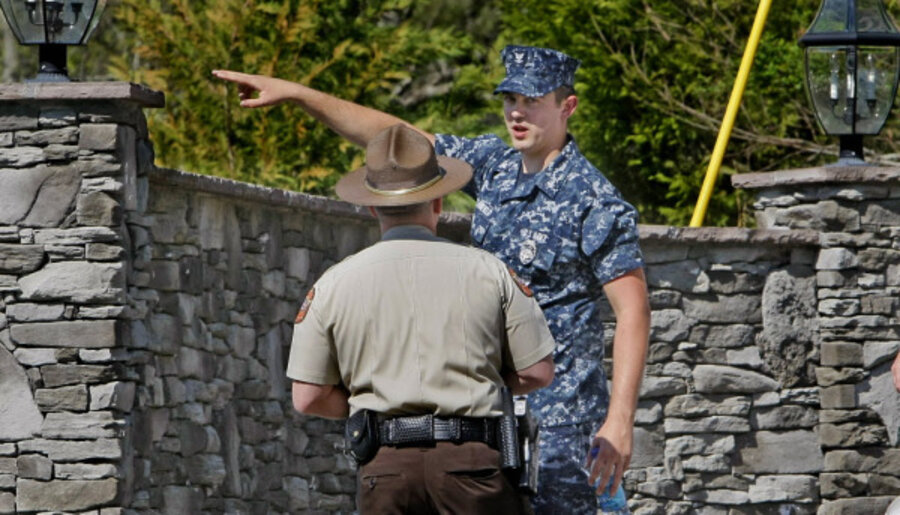Navy T-39N jet crash: Why train with low-level flights?
Loading...
| Atlanta
A team of Navy investigators arrived Tuesday in the deep north Georgia woods to begin clearing the accident site and getting to the bottom of the fourth T-39N trainer jet accident in eight years.
There's no known cause yet for the crash of a plane that had been seen by witnesses flying at a low altitude around the north Georgia mountains Monday afternoon, and which barely cleared a house before crashing in deep, inaccessible woods near Elijay, Ga. Three crew members were killed in the crash, and a fourth, still missing, is presumed to have been killed, as well.
The crash was the fourth in eight years for the pilot training command at the Naval Air Station in Pensacola, Fla., meaning that a quarter of the Navy's T-39N fleet of 15 planes have crashed.
The fact that the T-39N was seen flying at low altitude is not necessarily connected to the crash. One eyewitness reported that he saw debris falling from the aircraft before it crashed, indicating that it might have had mechanical difficulties, reports the Atlanta Journal-Constitution.
But flying at very low levels – while thrilling for some pilots – also carries risks, giving pilots less room for error.
"It's not inherently dangerous, but it can be terribly unforgiving," says Col. J. Joseph (USMC, retd.), a former safety officer for the Blue Angels, the Navy’s elite flight demonstration team.
Seat-of-the-pants flying
One reason training flights might be at low altitudes is to allow navigators to use dead reckoning – navigating without the help of electronic aids – to maneuver below the range of radar.
"They're flying low for reasons that have to do with being able to avoid enemy radar and surface-to-air missiles," says Cass Howell, the dean of aviation at Embry-Riddle Aeronautical University in Prescott, Ariz.
"In training missions of this nature you [likely have] an experienced pilot and then student navigators … actually reacting to radar and visual input and providing commentary to the pilot," he adds. "They may also be … learning how to recognize things from the air – dead reckoning with visual confirmation."
Visual cues may include mountaintops, bridges, or lakes. The T-39N in this week’s incident was spotted flying low over Carters Lake in Georgia before crashing near Blue Ridge Lake, about 20 miles away.
Routinely, such training flights are done at higher altitude and slower speeds than would be the case on an actual combat mission. Training routes are laid out across the US in a variety of terrains ranging from deserts to mountains.
The names and ranks of the victims have not yet been released. But the average crew, says Howell, is made up of an experienced pilot working with novice navigators and radar operators. Such missions, he says, are on the whole well-controlled and routine, with little opportunity for pilot bravado.
"I'm very confident that the Navy pilots and crew members were doing what they were supposed to be doing and not in any fashion stretching the capabilities of themselves or their aircraft," Howell says.
Why a 'cluster' of T-39N accidents?
In military pilot-training circles, there are expected loss-rates for aircraft because of the nature of the flying. But higher frequency and "clustering" of accidents, experts say, is cause for concern, and could provide clues that point to a common problem.
Overall, the Navy has a good record of flight safety and learning from crashes, says Joseph. Experts say the Navy made changes to training protocol after a 2006 accident in northwest Georgia where a T-39N pilot crashed.
"The justification for this type of training is to avoid detection ... and that's why they need to get down into the terrain," he says.





